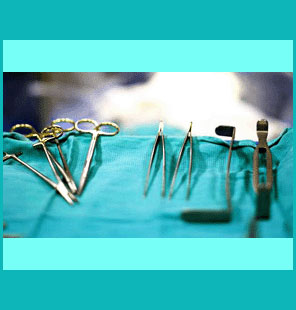
Thoracic herniated disc surgery is the least often seen type of disc-related spinal operation, since intervertebral bulging in the middle and upper back regions does not occur often and even when it does, the condition is not typically symptomatic in any significant way.
Herniated disc surgery is a risky and sometimes ineffectual therapy option that should be carefully considered before agreeing to treatment. However, surgical intervention for thoracic herniations is still one of the most popular drastic options for chronic disc pain in the upper and mid back zones. All the usual options are available to treat thoracic herniations surgically, from discectomy to laminectomy to spinal fusion. Artificial disc replacement is not commonly applied in the thoracic levels, but minimally invasive practices, such as IDET and nucleoplasty can be highly successful when utilized to resolve appropriate conditions.
This article investigates the use of surgical therapies to treat herniated discs in the upper and middle thoracic regions.
Thoracic Herniated Disc Surgery Warnings
Surgery is only indicated for the worst and most problematic disc pain issues. We generally advise patients to avoid thoracic herniated disc surgery, unless it is literally a matter of life or death and all other conservative options have proven ineffective.
Surgical spinal disc interventions are used far too frequently and demonstrate horrible long-term curative statistics. Additionally, statistics clearly reveal that there is a considerable chance for falling victim to failed herniated disc surgery syndrome, which can create real tangible disability where none existed previously. It is crucial to really weigh the many risks and potential complications of surgical intervention before seriously considering going under the knife. Getting multiple opinions from different types of doctors is also highly recommended.
Many disc irregularities are not the true source of pain and proper diagnosis would be able to ascertain this fact. Furthermore, when the disc is truly problematic, time alone may stop the pain and cause the disc to become asymptomatic. When neither of these factors apply, there are still many nonsurgical treatments that might be just as effectual as surgery, yet demonstrate none of the significant risk factors.
Types of Thoracic Disc Surgery
For verified structural pain issues, surgery may be an appropriate and even necessary option in the rarest of cases. When needed, there are several types of surgery that is commonly used for thoracic disc herniations:
Discectomy is still the most popular invasive therapy common. The worst risks are lower, when compared to some other procedures, but long-term treatment statistics are not promising. Many patients suffer a relapse of the herniation at the operated level within a year. We see lots of evidence that discectomy is typically used for misdiagnosed disc issues that could not possible be the source of pain. This goes a long way to explain why patient outcomes are disappointing.
Artificial disc replacement surgery is still gaining ground as a more enlightened option. This procedure is used for herniations and degenerative disc disease, but is far more common in the lumbar and cervical spinal levels.
Spinal fusion is a really abysmal option that contradicts the natural form and function of the spine. We virtually never agree that this is the best therapy option and may only find a few instances in which it is the lesser of 2 evils. In the case of thoracic herniated discs, many of these disc pathologies actually occur due to previous fusion procedures in the lower cervical levels and all patients should be well informed that fusion begets more fusions. It can become a lifelong cycle of suffering.
Laminectomy might be utilized to treat herniations alone, but is typically reserved when there are multiple spinal canal problems that need addressing, such as disc and bone irregularities that combine to form a central stenosis condition.
IDET and nucleoplasty offer hope for patients who choose the least invasive techniques to resolve contained bulging discs.
Thoracic Herniated Disc Surgery Opinions
As always, it is strongly suggested to take extreme care when thinking about any form of spinal surgery. Most patients acquiesce to invasive procedures out of desperation, thinking that their pain has not responded to conservative care and that an operation is the only thing left. What these patients fail to consider is that surgery can and often does make things much worse. This is a real nightmarish wake-up call for any post-operative upper back pain sufferer.
Do not fall into this trap, at least not without understanding the risks in advance and making an informed choice. Our advice is to avoid surgery like the plague, but if you have to do it, find the best doctor and least invasive procedure possible to optimize the chances for a satisfying result.
For more information about other varieties of thoracic disc operations, please consult with your orthopedic surgeon or neurosurgeon.
Herniated Disc > Herniated Disc in the Upper Back > Thoracic Herniated Disc Surgery





